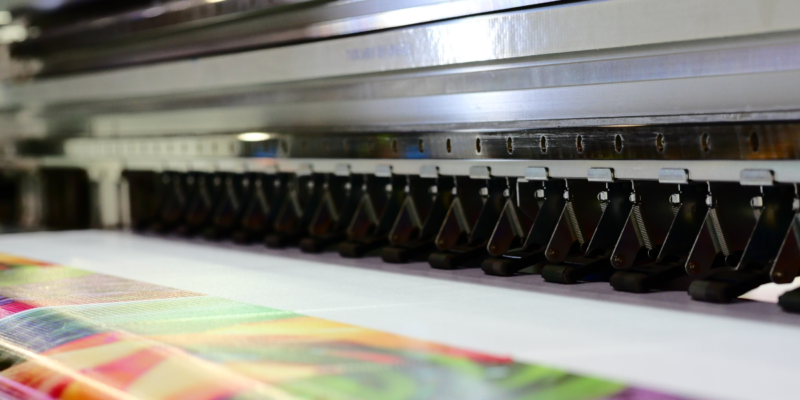In today’s world, where environmental concerns are at the forefront, the concept of zero-waste printing processes is gaining significant attention. As businesses strive to adopt more sustainable practices, the printing industry is no exception. The journey towards achieving zero waste in printing involves innovative techniques, efficient resource management, and a commitment to reducing the environmental footprint.

Understanding Zero-Waste Printing
At its core, zero-waste printing aims to minimize waste generation throughout the printing process. This approach integrates sustainable materials, advanced technologies, and efficient practices to create a closed-loop system where resources are reused and recycled.
Significance of Zero-Waste Printing
Transitioning to zero-waste printing is not just an environmental imperative; it also offers economic benefits. By reducing waste, companies can cut costs associated with raw materials and waste disposal. Moreover, adopting eco-friendly practices enhances a company’s reputation, attracting environmentally conscious customers.
Key Components of Zero-Waste Printing
1. Sustainable Materials
One of the fundamental aspects of zero-waste printing is the use of sustainable materials. Recycled paper, soy-based inks, and biodegradable packaging materials are becoming standard in the industry, reducing environmental impact.
2. Advanced Printing Technologies
Technological advancements play a crucial role in achieving zero waste. Digital printing, for instance, reduces the need for excess materials by enabling on-demand printing. Additionally, innovations like AI in printing technology optimize resource usage and minimize errors.
3. Waste Reduction Techniques
Implementing waste reduction techniques involves optimizing print layouts, employing efficient cutting methods, and recycling scrap materials. These practices not only minimize waste but also improve overall operational efficiency.
The Role of Technology in Zero-Waste Printing
Technology is a driving force behind the shift towards zero-waste printing. From digital platforms that streamline processes to innovative AR in print media, technology provides solutions that enhance sustainability without compromising quality.
Digital Printing: A Sustainable Solution
Digital printing has revolutionized the industry by reducing the need for traditional printing plates and excessive materials. This technology not only reduces waste but also offers flexibility, allowing businesses to print only what is needed.
Automation and Efficiency
Automation in printing processes minimizes human error and optimizes resource utilization. Automated systems ensure precise ink application, reducing waste and enhancing the overall quality of printed materials.
Benefits of Adopting Zero-Waste Printing
The benefits of embracing zero-waste printing extend beyond environmental conservation. Businesses that adopt these practices experience reduced operational costs, improved brand reputation, and compliance with environmental regulations.
Cost Savings
By minimizing waste, companies can significantly reduce costs associated with materials and disposal. This financial advantage allows businesses to allocate resources to other areas of growth and development.
Enhanced Brand Image
Consumers are increasingly drawn to brands that prioritize sustainability. By adopting zero-waste printing processes, companies demonstrate their commitment to environmental responsibility, attracting environmentally conscious customers.
Challenges in Implementing Zero-Waste Printing
While the benefits are clear, transitioning to zero-waste printing presents challenges. Initial investments in new technologies and training can be substantial. However, the long-term advantages outweigh the initial costs.
Investment in Technology
Adopting advanced printing technologies requires financial investment. However, the return on investment becomes evident as businesses experience reduced waste and increased efficiency.
Training and Adaptation
Shifting to zero-waste printing necessitates training employees to operate new technologies and adopt sustainable practices. This transition period requires time and effort but ultimately leads to a more efficient and environmentally friendly process.
Future of Zero-Waste Printing
The future of zero-waste printing is promising, with continuous advancements in technology and growing awareness of environmental issues. As more businesses adopt sustainable practices, the printing industry will play a crucial role in achieving global sustainability goals.
Innovation and Sustainability
Ongoing innovations in printing technologies will further enhance sustainability. From traditional vs modern offset printing techniques to digital solutions, the industry is evolving to meet the demands of a more environmentally conscious world.
Collaboration and Standards
Collaboration among industry stakeholders is essential for setting sustainable standards. By working together, companies can share best practices and develop industry-wide solutions that promote zero waste.
Conclusion
In conclusion, zero-waste printing processes represent a significant step towards sustainability in the printing industry. By adopting eco-friendly practices, utilizing advanced technologies, and minimizing waste, businesses can reduce their environmental impact and contribute to a more sustainable future. While challenges exist, the benefits of zero-waste printing make it a worthwhile endeavor for companies committed to environmental responsibility.

Frequently Asked Questions
What is zero-waste printing?
Zero-waste printing aims to eliminate waste in the printing process by using sustainable materials and advanced technologies to create a closed-loop system.
How does digital printing contribute to zero waste?
Digital printing reduces waste by minimizing the need for excess materials and allowing on-demand printing, which ensures resources are used efficiently.
What are the benefits of zero-waste printing?
Zero-waste printing offers environmental and economic benefits, including reduced waste, cost savings, improved brand image, and compliance with environmental regulations.
This article contains affiliate links. We may earn a commission at no extra cost to you.






